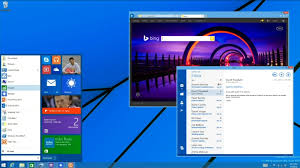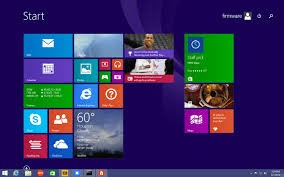
by Guido Marchetti, Cloud Solution Specialist, MJ Flood Technology
I had the privilege of being invited to Microsoft in December to a preview of Windows 10. The name itself made me think “but what happened to Windows 9?” which was a question asked by another delegate before I had the chance.
The presenter sidestepped the question in a diplomatic way – perhaps not unexpectedly.
There is a lot of noise out there about what happened Windows 9 and why the leap straight to Windows 10, but it doesn’t really matter. Microsoft can call it what they like, because I think that they have really cracked it this time.
Now I know those of you who have seen my previous blogs will think I’m a Microsoft “fan boy” (I’m grinning here as I write this on my Surface Pro) but I’m not. I simply acknowledge that when it comes practical, robust business solutions, Microsoft is the leader in this space.
I have used Windows 8 and 8.1 and have liked them both. But Windows 10 really excites me. It does for me exactly what Windows 8/8.1 should have done, which some would say is very unlike Microsoft in that they have listened to their clients and taken that feedback on board.
On that note, Microsoft should be praised for their current beta programme of Windows 10, the largest of its type. They have invited hundreds of thousands of people to download and try the beta of 10, but more importantly those users are encouraged to make suggestions. Some of those I have read so far, are being integrated into updates to the systems build.
Why the fuss about Windows 10?
This is a big change in Microsoft desktop strategy which used to be, “here it is now use it”. More interesting perhaps is that Windows 10 may be the last significant OS release, with Microsoft looking more likely to adopt the Apple approach of OS updates, with added features and benefits. This has yet to be confirmed but the fact that Windows 10 will become the core OS for all platforms from Microsoft is looking likely.
This approach would closely align their desktop and cloud strategies, where development of applications is taking a ‘cloud first’ approach, with central deployment and management. Office 365 subscriptions are an intrinsic part of that so why not the OS too?
Some key questions arise in this context. Will they charge for the updates? Will Intune manage the delivery to every device connected to it? Who knows but it’s an interesting space to watch.
What’s changing in Windows 10?
One welcome change I have seen is that apps from the start menu or screen (or as it was originally called the Metro) will now be able to live in a desktop Windows. This wasn’t possible in 8 or 8.1. Some of those apps like Adobe Reader are very useful and this change will allow them to reclaim their spot in the desktop.
Another major change will the return of the start menu. There are of course various ways of getting back to Windows 8 and 8.1 but Start is back due to popular demand. But for those of you who liked the tiles, well they will be in there too, all of your favourite ones. Check out the screenshots in this post.


It was in the enterprise that major issues were had with the look and feel of the tiles. In recognition of that, Microsoft have now built windows 10 with the ability to configure it to boot straight to desktop.
In the apps space, Microsoft are going to introduce the ability for companies to have corporate specific app stores. A step that third party devices require MDM platforms to manage or deliver for them.
From a security point of view, the requirement for a windows Live ID will be optional, an AD account will be sufficient. Another plus for business users and management teams is the system will also support biometric passwords, two factor authentication, smart card reader and the ability to keep your personal and business life on one device but in very separate silos.
The Microsoft cloud story is growing in strength day by day – Office365, Azure and Intune are all on the radar of businesses large and small for 2015. But as I have always said, a unified platform of devices to communicate with cloud services would make Microsoft a very formidable force in the tablet and smart device market once more. And with Windows 10 I think they’ve done it.
I hope that they get their story straight and messaging right when they come to market, because from where I’m standing it is shaping up very nicely. If they execute well on their desktop strategy, they could begin to halt their erosion of market share and rebuild their dominant market position of the past.
While modern technology offers amazing gains in productiv...
Following the end of the world’s largest BETA testing pro...
Here we are again. Yet another large, software platform i...